- Home
- Charles Dickens
Selected Short Fiction
Selected Short Fiction Read online
Table of Contents
Title Page
Copyright Page
Introduction
TALES OF THE SUPERNATURAL
The Story of the Goblins who stole a Sexton
The Baron of Grogzwig
A Confession Found in a Prison in the Time of Charles the Second
To Be Read at Dusk
No. 1 Branch Line. The Signalman
IMPRESSIONISTIC SKETCHES
The Election for Beadle
Seven Dials
Meditations in Monmouth-Street
A Visit to Newgate
A Christmas Tree
A Flight
Our School
Lying Awake
His General Line of Business
Refreshments for Travellers
Travelling Abroad
City of London Churches
Shy Neighbourhoods
Dullborough Town
Nurse’s Stories
Arcadian London
The Calais Night-Mail
DRAMATIC MONOLOGUES
His Leaving it till called for
His Brown-Paper Parcel
His Wonderful End
How Mrs Lirriper carried on the Business
How the Parlours added a few words
Mrs Lirriper Relates how She Went On, and Went Over
Mrs Lirriper Relates how Jemmy Topped Up
DOCTOR MARIGOLD’S PRESCRIPTIONS - To Be Taken Immediately
To Be Taken for Life
MUGBY JUNCTION - Main Line. The Boy at Mugby
George Silverman’s Explanation
APPENDIX
NOTES
SELECTED SHORT FICTION
CHARLES DICKENS was born at Portsmouth on 7 February 1812, the second of eight children. Dickens’s childhood experiences were similar to some extent to those depicted in David Copperfield. His father, who was a government clerk, was imprisoned for debt and Dickens was sent to work at the age of twelve. The memories of this period were to haunt him until his death. He taught himself shorthand and became a reporter of parliamentary debates for the Morning Chronicle. He began to publish sketches in various periodicals, which were subsequently republished as Sketches by Boz. The Pickwick Papers was published in 1836 — 7 and after a slow start became a publishing phenomenon and Dickens’s characters the centre of a popular cult. Part of the secret of his success was the method of cheap serial publication, which Dickens used for all his novels. He began Oliver Twist in 1837, followed by Nicholas Nickleby (1838 — 9) and The Old Curiosity Shop (1840 — 41). After finishing Barnaby Rudge (1841) Dickens set off for America; he went full of enthusiasm for the young republic but, in spite of a triumphant reception, he returned disillusioned. His experiences are recorded in American Notes (1842). Martin Chuzzlewit (1843-4) did not repeat its predecessors’ success but this was quickly redressed by the huge popularity of the Christmas Books, of which the first, A Christmas Carol, appeared in 1843. Dombey and Son (1846 — 8) and David Copperfield (1849 — 50) were more serious in theme and more carefully planned than his early novels. In this later work Dickens’s social criticism became more radical and his comedy more savage. Bleak House, published in 1852 — 3, was followed by Hard Times (1854), Little Dorrit (1855 — 7), A Tale of Two Cities (1859), Great Expectations (1860-61) and Our Mutual Friend (1864-5). His last novel, The Mystery of Edwin Drood, was never completed and he died on 9 June 1870. Public grief at his death was considerable and he was buried in the Poets’ Corner of Westminster Abbey.
DEBORAH A. THOMAS is Professor of English at Villanova University in Villanova, Pennsylvania. She is the author of Dickens and the Short Story, Thackeray and Slavery and Hard Times: A Fable of Fragmentation and Wholeness.
PENGUIN BOOKS
Published by the Penguin Group
Penguin Books Ltd, 80 Strand, London WC2R ORL, England
Penguin Group (USA) Inc., 375 Hudson Street, New York, New York 10014, USA
Penguin Books Australia Ltd, 250 Camberwell Road, Camberwell, Victoria 3124, Australia
Penguin Books Canada Ltd, 10 Alcom Avenue, Toronto, Ontario, Canada m4v 3B2
Penguin Books India (P) Ltd, 11 Community Centre, Panchsheel Park, New Delhi - 110 017, India
Penguin Group (NZ), cnr Airborne and Rosedale Roads, Albany, Auckland 1310, New Zealand
Penguin Books (South Africa) (Pty) Ltd, 24 Sturdee Avenue, Rosebank 2196, South Africa
Penguin Books Ltd, Registered Offices: 80 Strand, London WC2R ORL, England
www.penguin.com
This selection first published in the Penguin English Library 1976
Introduction and notes copyright © Deborah A. Thomas, 1976 All rights reserved
Printed and bound in Great Britain by
Clays Ltd, St Ives plc
Set in Monotype Fournier
eISBN : 978-1-101-10084-4
www.greenpenguin.co.uk
Penguin Books is committed to a sustainable future
for our business, our readers and our planet.
The book in your hands is made from paper
certified by the Forest Stewardship Council.
http://us.penguingroup.com
CHARLES DICKENS
A NOTE BY ANGUS CALDER
CHARLES DICKENS was born at Portsmouth on 7 February 1812. He was the second of the eight children of John Dickens, a clerk in the Naval Pay Office, whose mother had been in service to Lord Crewe. Although John Dickens was hard-working, he was rarely able to live within his income, and this brought a series of crises upon his family, which lived under the shadow of menacing social insecurity.
John Dickens’s work took him from place to place, so that Charles spent his early childhood in Portsmouth, London, and Chatham. He was happiest at Chatham, where he attended a school run by a young Baptist minister, who recognized his abilities and paid him special attention. In 1823 the family moved to London, faced with financial disaster, and, to help out, a relative of Mrs Dickens offered Charles work in a blacking business which he managed. Two days before his twelfth birthday the boy began work at a factory at Hungerford Stairs, labelling bottles for six shillings a week.
Shortly before this, John Dickens had been arrested for debt, and soon the whole family, except for Charles, who was found lodgings, joined him in the Marshalsea Debtors’ Prison. The double blow - his menial job and the family shame - gave Charles a shock which transformed him. In later years he told only his wife and his closest friend, John Forster, of these experiences, which haunted him till his death.
After three months in prison, John Dickens was released by process of having himself declared an Insolvent Debtor, but it was not until weeks later that he withdrew Charles from work and sent him to school, where he did well. At fifteen, Charles began work in the office of a firm of Gray’s Inn attorneys. Sensing a vocation elsewhere, he taught himself shorthand, and eighteen months later began to work as a freelance reporter in the court of Doctors’ Commons.
In 1829 or 1830 he fell passionately in love with Maria Beadnell, the daughter of a banker. Their affair staggered fruitlessly on until the summer of 1833. Meanwhile, he began to report parliamentary debates, and won himself a high reputation for speed and accuracy. His first Sketches by Boz appeared in magazines soon after he was twenty-one. In 1834 he joined the reporting staff of the Morning Chronicle. A well-received volume of his Sketches appeared on his twenty-fourth birthday.
His growing reputation secured him a commission from the publishers, Chapman and Hall, to provide the text to appear in monthly instalments beside sporting plates by a popular artist, Seymour. He ‘thought of Mr Pickwick’. Two days after the first number appeared he married Catherine Hogarth, the daughter of a fellow-journalist, on the
prospect. Although early sales were disappointing, Pickwick Papers (1836-7) soon became a publishing phenomenon, and Dickens’s characters the centre of a popular cult. Part of the secret was the method of cheap serial publication, which Dickens used for all his subsequent novels (some, however, being serialized in weekly magazines edited by himself), and which was copied by other writers.
While Pickwick was still running, Dickens began Oliver Twist (1837). Nicholas Nickleby (1838-9) provided him with a third success, and sales of The Old Curiosity Shop (1840-41) reached 100,000. After finishing Barnaby Rudge (1841), Dickens set off with his wife for the United States. He went full of enthusiasm for the young republic, but returned heartily disillusioned, in spite of a triumphant reception. His experiences are recorded in American Notes (1842).
His first setback came when Martin Chuzzlewit (1843-4) did not repeat the extraordinary success of its predecessors, though he promptly inaugurated his triumphant series of Christmas Books with A Christmas Carol (1843). He now travelled abroad, first to Italy (1844-5) and then to Switzerland and Paris (1846). During a brief interlude in England he projected, not another novel, but a paper, the Daily News. This first appeared in January 1846, but Dickens resigned after only seventeen days as editor.
His next novel, Dombey and Son (1846-8), was more wholly serious and more carefully planned than his early work. In David Copperfield (1849-50), he explored his own childhood and youth, thinly disguised. In the 1850s he increased his already intense interest in public affairs. He founded Household Words, a weekly magazine which combined entertainment with social purpose; it was succeeded in 1859 by All the Year Round, which sold as many as 300,000 copies. Bleak House (1852-3) and Hard Times (1854) have strong social themes, and Little Dorrit (1855-7) continues Dickens’s bitter public denunciation of the whole framework of government and administration which had mismanaged the Crimean War.
In 1858 he separated from his wife. Although Kate, a shadowy, slow person, had given him ten children, she had never suited his exuberant temperament very well. He befriended a young actress, Ellen Ternan, who may have become his mistress. He was now living mainly in Kent, at Gad’s Hill, near his boyhood home of Chatham. A Tale of Two Cities (1859), Great Expectations (1860- 61), and Our Mutual Friend (1864-5) completed his life’s main work of fourteen major novels. By the mid 1860s his health was failing, partly under the strain of his successful but exhausting public readings from his own work, which had begun in 1858. An immensely profitable but physically shattering series of readings in America (1867-8) speeded his decline, and he collapsed during a ‘farewell’ series in England. His last novel, Edwin Drood (1870), was never completed; he suffered a stroke after a full day’s work at Gad’s Hill on 8 June 1870 and died the following day. Lamentation was demonstrative and universal, and he was buried in the Poets’ Comer of Westminster Abbey.
Dickens’s extreme energy was not exhausted by his unique success as a novelist. His weekly journalism made heavy demands on his time after 1850, and he constantly turned to the stage, first in many amateur theatricals, given privately or for charity, where he produced and took leading roles with great brilliance, and, later, in his public readings. His concern with social reform in his novels and journalism was matched by an active personal interest in several charitable projects.
Furthermore, as Lionel Trilling puts it, ‘the mere record of his conviviality is exhausting’. His typical relaxation was a long walk at great speed, and he was dedicated to any and every sort of game or jollification. In the early days of his success, observers were sometimes displeased by his flamboyant dress and a hint of vulgarity in his manners, but he had powerful, magnetizing eyes and overwhelming charm. Beneath his high spirits, friends could detect a permanent emotional insecurity and restlessness, which flavours the tragi-comic world of his novels.
Two biographies stand out among many: John Forster’s Life (1872-4, many times reprinted); and Edgar Johnson’s Charles Dickens, His Tragedy and Triumph (London: Gollancz, 1953), which embodies material neglected or suppressed by Forster. Readers interested in Dickens’s methods as a novelist will be enlightened by John Butt’s and Kathleen Tillotson’s Dickens at Work (London: Methuen, 1957). There are innumerable specialized studies of his work, life and views. A magazine exclusively devoted to the subject, The Dickensian, is published three times a year by the Dickens Fellowship.
INTRODUCTION
LIKE an unfamiliar side dish ignored by diners intent on sirloin steak, Dickens’s short fiction, apart from his Christmas Books, has often been overlooked.a Those who do turn their attention to it frequently find it baffling. Many of the assorted stories and sketches which Dickens produced throughout his career defy conventional categorization and now lie buried in remote corners of his collected works. The preternatural occurrences in tales like ‘The Signalman’, the impressionistic fusion of sensations in sketches like ‘The Calais Night-Mail’, and remarkable monologues like those in Mrs Lirriper’s Lodgings and Mrs Lirriper’s Legacy are seldom remembered in discussions of similar, although often less striking, elements in Dickens’s novels. With the single exception of A Christmas Carol, the samples of Dickens’s seemingly minor work which the modern reader most often encounters - the pieces collected in Sketches by Boz and the tales introduced into Pickwick Papers - are amongst his earliest compositions, and inevitably reflect the occasionally unsteady hand of the developing artist. Consequently, faced with the infinite variety of Dickens’s better known writings from Pickwick Papers to The Mystery of Edwin Drood, few people have explored these unfamiliar pieces in any depth. Sylvère Monod’s passing comment that his shorter stories ... however intrinsically interesting, seemed to me to belong to another literary genre [than his novels] and to deserve a separate study’b is a rare tribute to the value of Dickens’s short fiction in its own right. Nevertheless, this material is sometimes very lively, and evidently occupied an important place in Dickens’s thoughts.
According to Percy Fitzgerald, one of his young associates, Dickens ‘always seemed to hanker after the short story’.c As Dickens learned relatively early, however, his public did not share this inclination. Master Humphrey’s Clock, a journal, like Gold-smith’s Bee, containing a miscellaneous assortment of short pieces, suffered a marked drop in sales, so he transformed one tale into a full-length novel (The Old Curiosity Shop) and thereafter confined his writing to novels, except on special occasions. The most special of such occasions was Christmas, which presented Dickens with the opportunity to indulge once again in literature like the fairy tales he had enjoyed in childhood. His close friend and biographer John Forster observed about Dickens’s Christmas Books: ‘No one was more intensely fond than Dickens of old nursery tales, and he had a secret delight in feeling that he was here only giving them a higher form.’ Moreover, the five Christmas Books which Dickens produced in the 1840s were by no means his only outlet for short fiction. In 1850, he inaugurated Household Words, a weekly periodical succeeded in 1859 by All the Year Round, which he edited until his death in 1870; they provided him with an excuse not only for additional Christmas pieces but also for less seasonal subjects, like the workings of memory and the manifestations of the macabre, which emerge in many of his novels in less concentrated form. In some cases, as Harry Stone has perceptively argued, they gave him a chance to experiment with techniques of rendering the operation of the mind - at times verging upon stream-of-consciousness narration - which he felt his readers would not accept in novels.d Lack of inhibition is often dangerous, and some of Dickens’s short creations might be gladly wished away, but others show a literary master brilliantly indulging in the very essence of his art.
The sketch entitled ‘A Christmas Tree’, for example, explicitly reveals this sense of liberation. Above all, as the narrator declares, Christmas is the time for an imaginative vacation:
And I do come home at Christmas. We all do, or we all should. We all come home, or ought to come home, for a short holiday - the longer, the better - from th
e great boarding-school, where we are for ever working at our arithmetical slates, to take, and give a rest. As to going a visiting, where can we not go, if we will; where have we not been, when we would; starting our fancy from our Christmas Tree!
The ‘fancy’ which starts ‘from our Christmas Tree’ flies rapidly ‘Away into the winter prospect’ and into the realm of ‘Winter Stories - Ghost Stories, or more shame for us - round the Christmas fire’. It flows in and out of narrative personae. The unspecified first-person singular speaker of the initial portion of the sketch becomes a nervous observer of ghosts: ‘We are a middle-aged nobleman, and we make a generous supper with our host and hostess and their guests’; ‘we always travel with pistols’; ‘we are dead now’. The symbolic homecoming ‘from the great boarding-school, where we are for ever working at our arithmetical slates’ follows a fusion of recollections of toys and tales ‘upon the branches of the Christmas Tree of our own young Christmas days’, and the supernatural ‘going a visiting’ ultimately fades into seasonal emotion with an allusion to the birth in Bethlehem for which the holiday is named: ‘In every cheerful image and suggestion that the season brings, may the bright star that rested above the poor roof, be the star of all the Christian world!’ The motivation, the ingredients, the vitality, and the difficulties of Dickens’s short fiction are here in embryo.
The key word in this context is ‘fancy’ - the vague but vital quality which triumphs over utilitarian practicality in Dickens’s novel Hard Times. The term appears repeatedly in his writing, not as a clearly defined critical concept as in Wordsworth and Coleridge but rather as an infallible panacea for a debilitating overdose of fact. Fancy, for Dickens, was roughly synonymous with imagination. However, the meanings which he attached to this protean word range, among a host of others, from temporarily escaping the workaday world to softening it with feeling, or transforming it into something strange and new through the power of a contemplative, creative eye. As Dickens himself willingly acknowledged, fancy is fundamental to his concept of literature, and it appears in one or more of these senses in his work of any length. As he explained in one of his rare defences of his art:

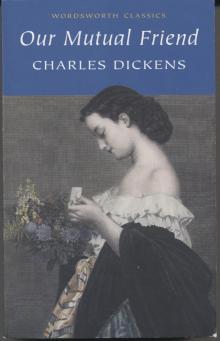 Our Mutual Friend
Our Mutual Friend_preview.jpg) The Posthumous Papers of the Pickwick Club, v. 1 (of 2)
The Posthumous Papers of the Pickwick Club, v. 1 (of 2)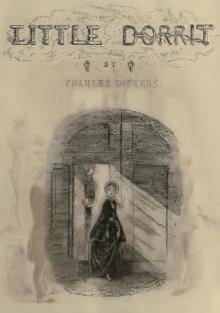 Little Dorrit
Little Dorrit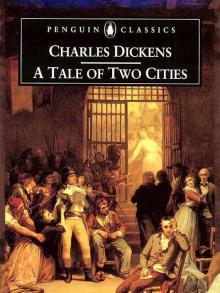 A Tale of Two Cities
A Tale of Two Cities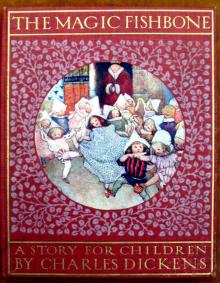 The Magic Fishbone
The Magic Fishbone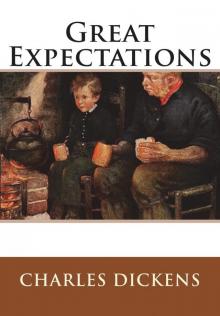 Great Expectations
Great Expectations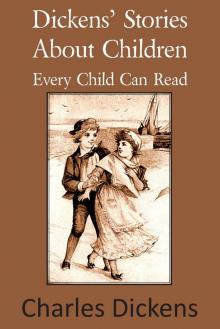 Dickens' Stories About Children Every Child Can Read
Dickens' Stories About Children Every Child Can Read A Christmas Carol
A Christmas Carol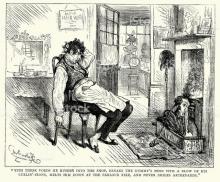 Master Humphrey's Clock
Master Humphrey's Clock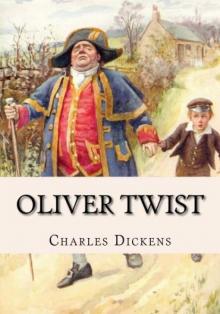 Oliver Twist
Oliver Twist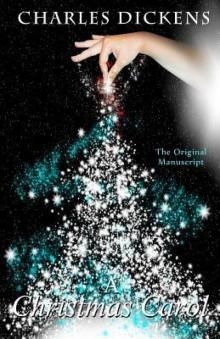 A Chrismas Carol
A Chrismas Carol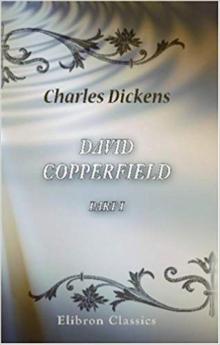 David Copperfield
David Copperfield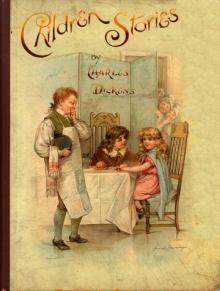 Charles Dickens' Children Stories
Charles Dickens' Children Stories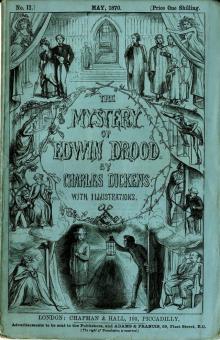 The Mystery of Edwin Drood
The Mystery of Edwin Drood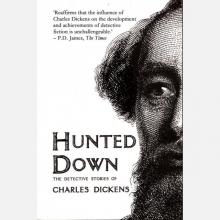 Hunted Down: The Detective Stories of Charles Dickens
Hunted Down: The Detective Stories of Charles Dickens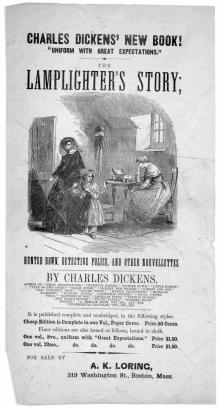 The Lamplighter
The Lamplighter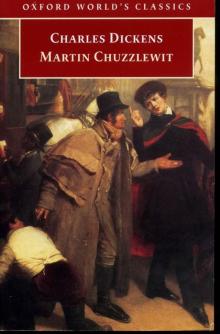 Martin Chuzzlewit
Martin Chuzzlewit_preview.jpg) The Posthumous Papers of the Pickwick Club, v. 2 (of 2)
The Posthumous Papers of the Pickwick Club, v. 2 (of 2)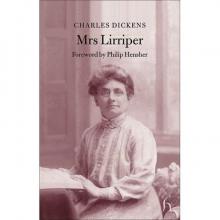 Mrs. Lirriper's Legacy
Mrs. Lirriper's Legacy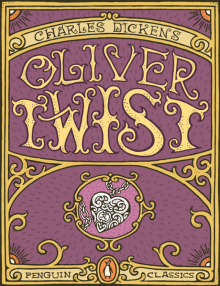 Captain Boldheart & the Latin-Grammar Master
Captain Boldheart & the Latin-Grammar Master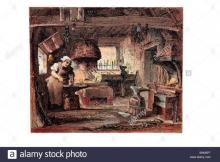 Barnaby Rudge: A Tale of the Riots of 'Eighty
Barnaby Rudge: A Tale of the Riots of 'Eighty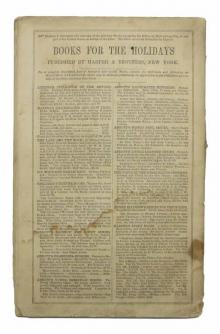 Mrs. Lirriper's Lodgings
Mrs. Lirriper's Lodgings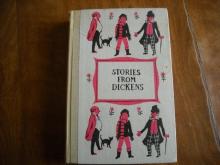 Stories from Dickens
Stories from Dickens The Mudfog Papers
The Mudfog Papers Bardell v. Pickwick
Bardell v. Pickwick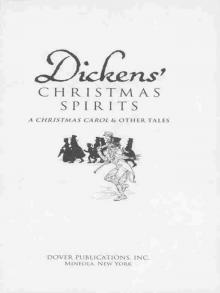 Dickens' Christmas Spirits
Dickens' Christmas Spirits A Christmas Carol, the Chimes & the Cricket on the Hearth
A Christmas Carol, the Chimes & the Cricket on the Hearth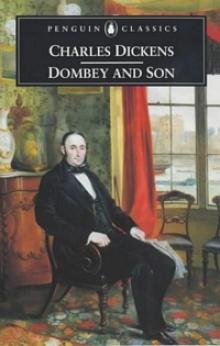 Dombey and Son
Dombey and Son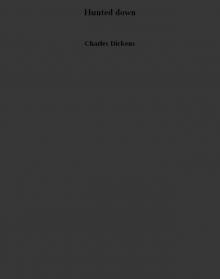 Hunted down
Hunted down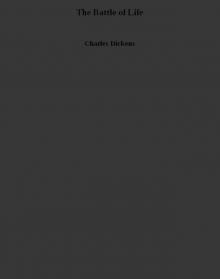 The Battle of Life
The Battle of Life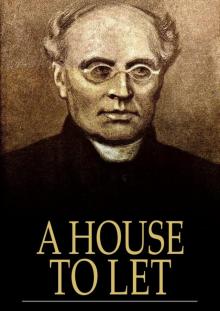 A House to Let
A House to Let Works of Charles Dickens (200+ Works) The Adventures of Oliver Twist, Great Expectations, A Christmas Carol, A Tale of Two Cities, Bleak House, David Copperfield & more (mobi)
Works of Charles Dickens (200+ Works) The Adventures of Oliver Twist, Great Expectations, A Christmas Carol, A Tale of Two Cities, Bleak House, David Copperfield & more (mobi)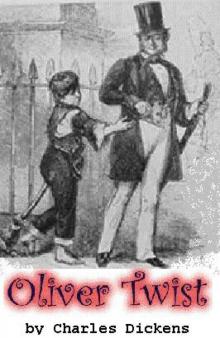 The Adventures of Oliver Twist
The Adventures of Oliver Twist The Charles Dickens Christmas MEGAPACK™
The Charles Dickens Christmas MEGAPACK™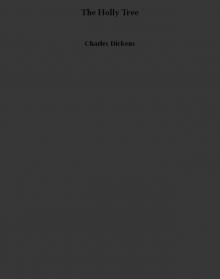 The Holly Tree
The Holly Tree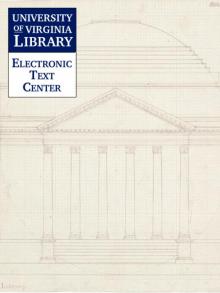 The Haunted Man and the Ghost`s Bargain
The Haunted Man and the Ghost`s Bargain Life And Adventures Of Martin Chuzzlewit
Life And Adventures Of Martin Chuzzlewit A Message From the Sea
A Message From the Sea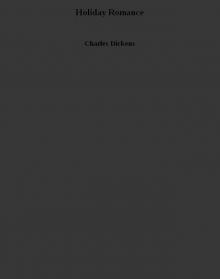 Holiday Romance
Holiday Romance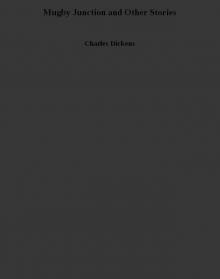 Mugby Junction and Other Stories
Mugby Junction and Other Stories Sunday Under Three Heads
Sunday Under Three Heads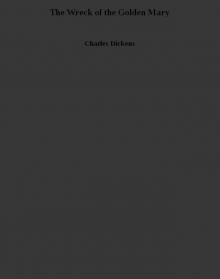 The Wreck of the Golden Mary
The Wreck of the Golden Mary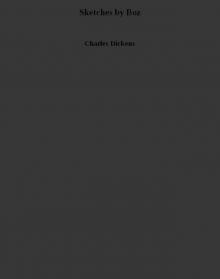 Sketches by Boz
Sketches by Boz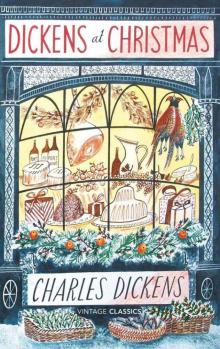 Dickens at Christmas (Vintage Classics)
Dickens at Christmas (Vintage Classics) All The Year Round
All The Year Round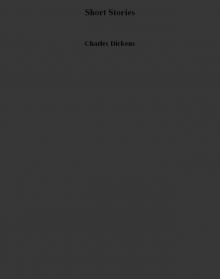 Short Stories
Short Stories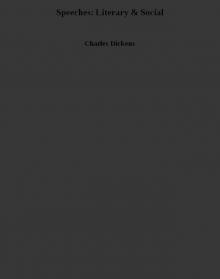 Speeches: Literary & Social
Speeches: Literary & Social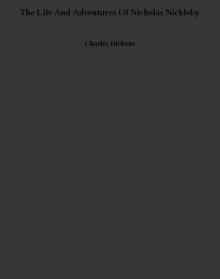 The Life And Adventures Of Nicholas Nickleby
The Life And Adventures Of Nicholas Nickleby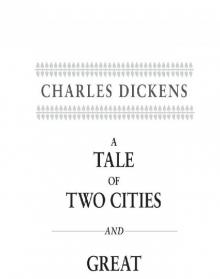 A Tale of Two Cities and Great Expectations (Oprah's Book Club)
A Tale of Two Cities and Great Expectations (Oprah's Book Club)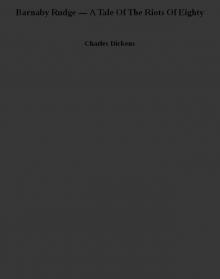 Barnaby Rudge — A Tale Of The Riots Of Eighty
Barnaby Rudge — A Tale Of The Riots Of Eighty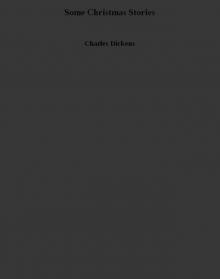 Some Christmas Stories
Some Christmas Stories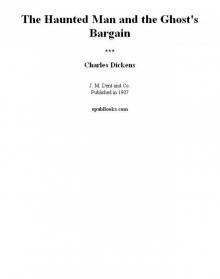 The Haunted Man and the Ghost's Bargain tc-5
The Haunted Man and the Ghost's Bargain tc-5 The Charles Dickens Christmas Megapack
The Charles Dickens Christmas Megapack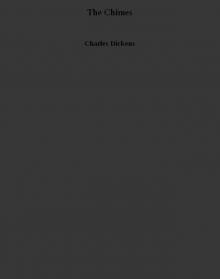 The Chimes
The Chimes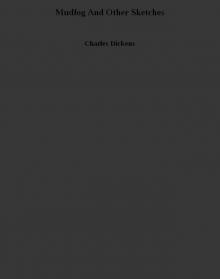 Mudfog And Other Sketches
Mudfog And Other Sketches Miscellaneous Papers
Miscellaneous Papers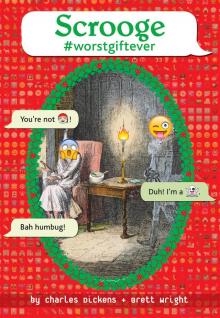 Scrooge #worstgiftever
Scrooge #worstgiftever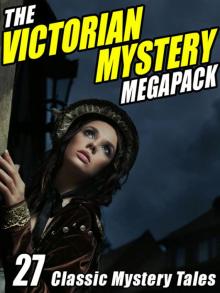 The Victorian Mystery Megapack: 27 Classic Mystery Tales
The Victorian Mystery Megapack: 27 Classic Mystery Tales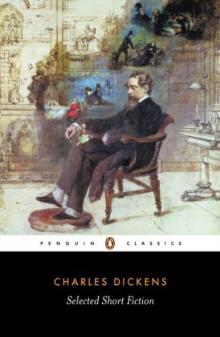 Selected Short Fiction
Selected Short Fiction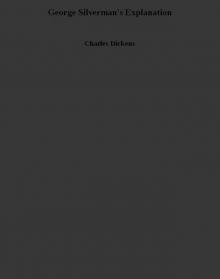 George Silverman's Explanation
George Silverman's Explanation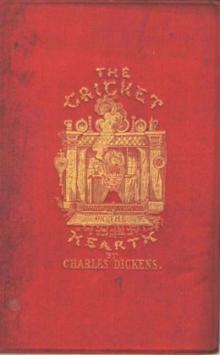 The Cricket on the Hearth c-3
The Cricket on the Hearth c-3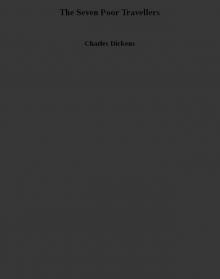 The Seven Poor Travellers
The Seven Poor Travellers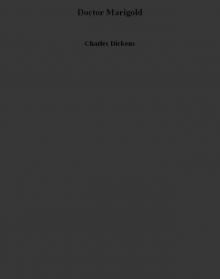 Doctor Marigold
Doctor Marigold Three Ghost Stories
Three Ghost Stories